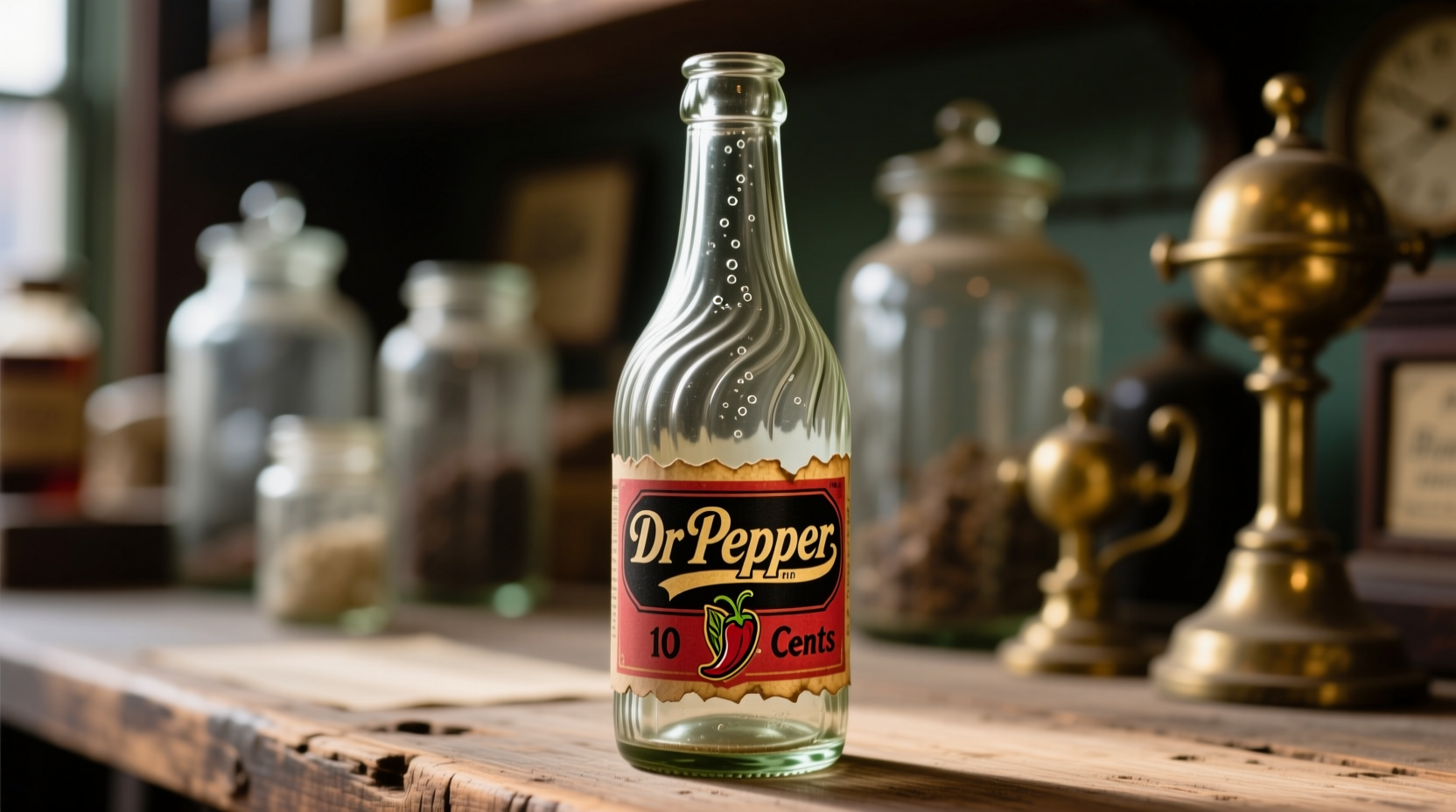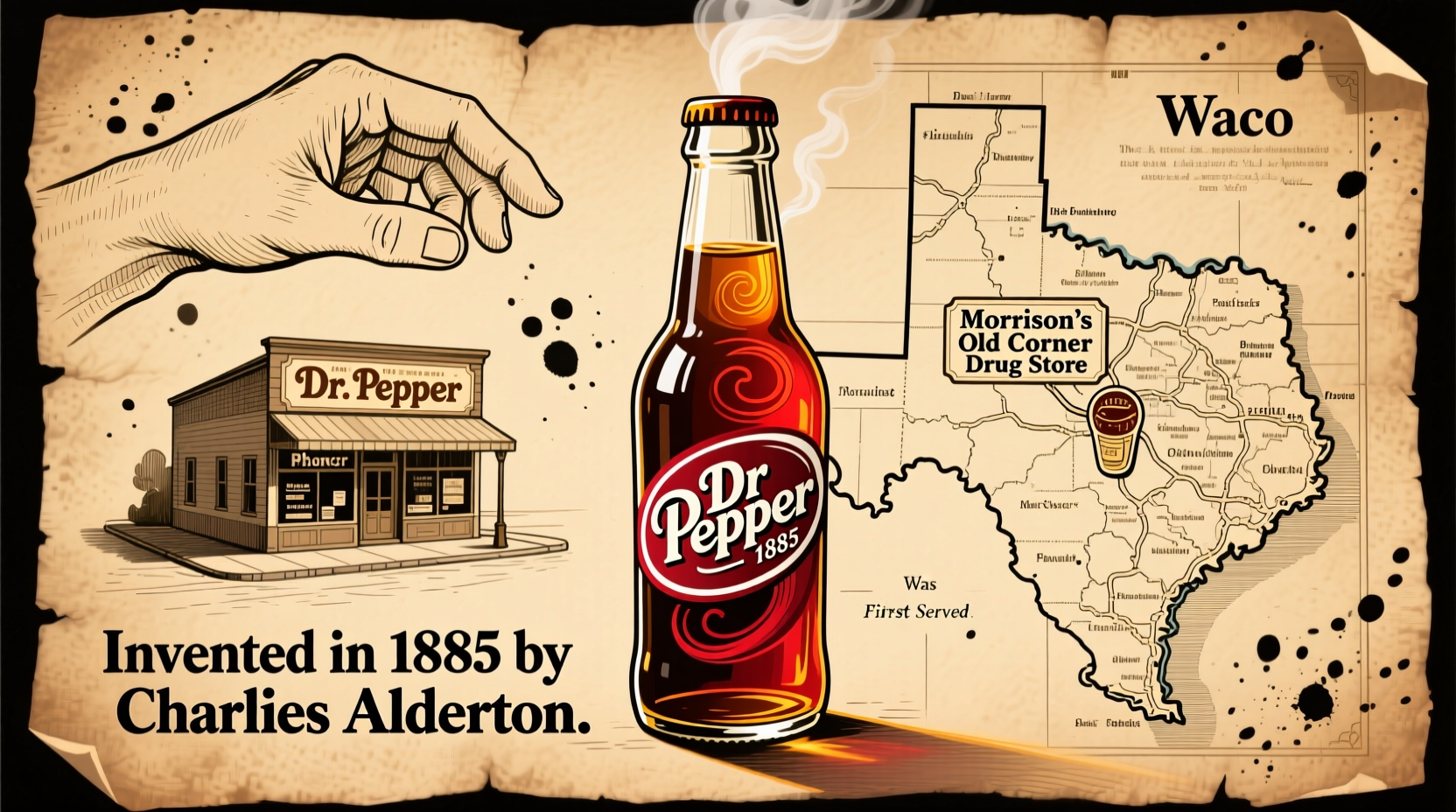Discover the fascinating origins of America's oldest major soft drink brand as we explore the historical context, creator's background, and cultural significance behind Dr Pepper's creation. Whether you're a soda enthusiast, history buff, or simply curious about this distinctive beverage, you'll gain authentic insights into how a pharmacy experiment became a national phenomenon.
The Birth of an American Icon
In the sweltering Texas heat of 1885, pharmacist Charles Alderton was experimenting with flavor combinations at Morrison's Old Corner Drug Store in Waco. Unlike modern soda creators who develop formulas in laboratories, Alderton was simply trying to create a unique fountain drink that would stand out among the typical fruit-flavored sodas of the era. His creation—a distinctive blend with neither a single dominant fruit flavor nor the medicinal taste of contemporary tonics—quickly became the most popular item at the soda fountain.
Customers began specifically requesting the "Waco" special, named after the city itself. Pharmacy owner Wade Morrison recognized the potential of this unique beverage and began bottling it for wider distribution. The name "Dr Pepper" reportedly came from Morrison's admiration for Dr. Charles Pepper, a Virginia physician whose daughter he had once loved.
| Year | Key Development | Historical Context |
|---|---|---|
| 1885 | First served at Morrison's drugstore | Post-Reconstruction era, American industrialization accelerating |
| 1900 | Displayed at Paris Exposition | International recognition begins |
| 1904 | First commercial bottling | St. Louis World's Fair introduces mass production techniques |
| 1906 | Official trademark registration | Pure Food and Drug Act passes, requiring ingredient labeling |
Debunking Common Dr Pepper Myths
Despite its long history, numerous misconceptions surround Dr Pepper's origins. Historical records from the Dr Pepper Museum in Waco, Texas, clarify several persistent myths:
- Myth: Dr Pepper contains prune juice or has a prune flavor
Fact: The distinctive taste comes from a proprietary blend of 23 flavors, but prune is not among them. The confusion likely stems from early marketing that emphasized its "healthful" properties. - Myth: The "period" after "Dr" was added later
Fact: Historical advertisements and trademark documents consistently show the period after "Dr" from the earliest commercial uses. - Myth: The drink was invented as a patent medicine
Fact: Unlike Coca-Cola (which originally contained cocaine) or Pepsi (marketed as a digestive aid), Dr Pepper was created specifically as a refreshing beverage without medicinal claims.

The 23 Flavors Mystery
One of Dr Pepper's most enduring marketing claims is that it contains 23 distinct flavors. While the exact formula remains a closely guarded secret, historical analysis of early ingredient lists and manufacturing records suggests the original formulation likely included:
- Carbonated water
- Sugar
- Caramel color
- Phosphoric acid
- Natural and artificial flavors
Food historians analyzing 19th century flavor trends believe the "23 flavors" likely refers to the complex interplay of ingredients rather than 23 distinct added flavors. The original formulation probably incorporated common flavoring agents of the era including:
- Vanilla
- Cherry
- Almond
- Peppermint
- Cinnamon
- Wintergreen
Dr Pepper in Historical Context
Understanding when Dr Pepper was invented requires examining the late 19th century American beverage landscape. During this period:
- Soda fountains were social hubs in pharmacies, serving as community gathering places
- Carbonated beverages were considered healthful alternatives to alcohol
- Most sodas were single-flavor offerings (root beer, ginger ale, lemon-lime)
- The soft drink industry was transitioning from local pharmacy creations to nationally distributed brands
Dr Pepper's unique flavor profile—neither distinctly fruity nor medicinal—gave it a competitive advantage. While Coca-Cola was invented in 1886 (one year after Dr Pepper), it didn't achieve national distribution until the early 20th century. This makes Dr Pepper arguably America's first nationally marketed soft drink brand.
From Local Curiosity to National Phenomenon
The journey from Waco pharmacy experiment to national brand involved several critical developments:
- 1891: First recorded sale of Dr Pepper extract to other soda fountain operators
- 1900: Displayed at the Paris Exposition, gaining international attention
- 1904: Bottled commercially for the first time at the St. Louis World's Fair
- 1920s: Expansion through regional bottling franchises across the southern United States
- 1950s: National marketing campaigns established Dr Pepper as a household name
Unlike many contemporary beverages that faded into obscurity, Dr Pepper's distinctive taste ensured its survival through changing consumer preferences. The brand's consistent flavor profile over more than 135 years demonstrates the enduring appeal of Alderton's original formulation.
Why Dr Pepper's Origin Matters Today
Understanding when Dr Pepper was invented provides valuable context for appreciating its cultural significance. As the oldest major soft drink brand in America, Dr Pepper represents:
- A tangible connection to late 19th century American innovation
- The evolution of social spaces (from pharmacy soda fountains to modern convenience stores)
- The development of branding and marketing in consumer culture
- A successful example of regional products achieving national prominence
For beverage historians and cultural researchers, Dr Pepper's origin story offers insights into how seemingly simple inventions can become embedded in national identity. The drink's survival through Prohibition, two World Wars, and changing dietary trends speaks to its unique place in American consumer history.











 浙公网安备
33010002000092号
浙公网安备
33010002000092号 浙B2-20120091-4
浙B2-20120091-4